What made Halo 3's High Ground a great map, according to the people who made it
The origins of one of the great attack/defend maps, including some rare in-development sketches.
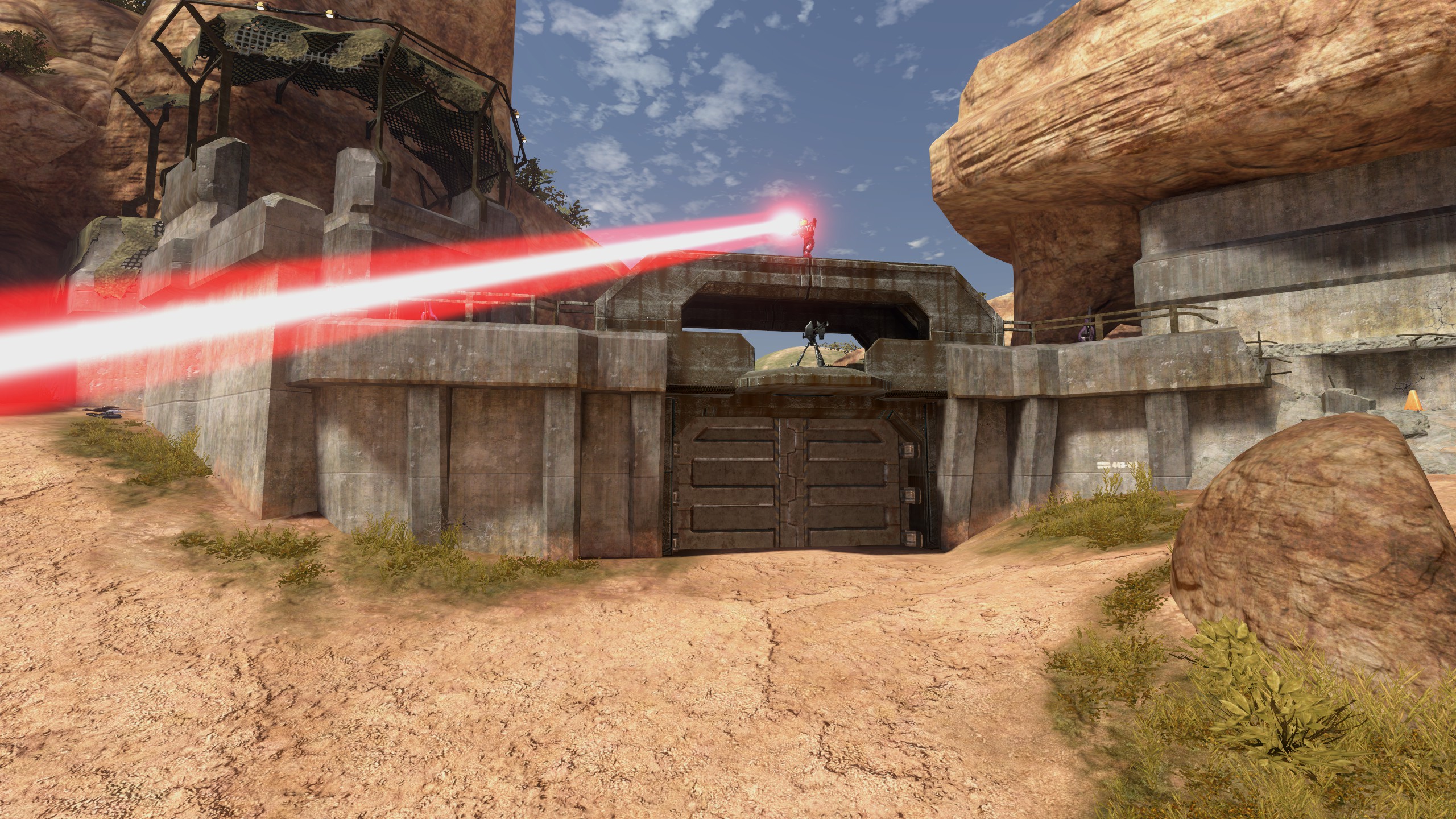
In a PC port that comes 13 years after it first released, Halo 3 holds up—including its campaign, its multiplayer balance, and the "best lineup of maps" in Halo's history, as we mentioned in our review. The king of Halo 3's objective maps is High Ground, an asymmetric base assault that sends the attacking team charging up a hill while the defenders guard a giant wall, raining down bullets and Spartan laser fire from above.
It's the kind of map that you can play a hundred times without getting bored of it, refining your strategy on both attack and defense, with enough variety to keep any round from becoming predictable. One round the attackers may rush the control panel that opens up the front gate, making it possible to drive a dangerous Ghost straight into the back of the base. Another time they might use a one-off piece of equipment, a grav lift, to jump to the sniper tower on top of the wall and take the height advantage.
The idea for High Ground came from a series of "exercises" that multiplayer map designers Chris Carney, Steve Cotton, and Justin Hayward did at the beginning of Halo 3's development. They challenged themselves to design and refine pieces that they thought could work well in maps, like a perfect sniper tower or a wall that one team could scale. That early idea eventually became High Ground.
I spoke with Carney and Cotton, who led the multiplayer map design in both Halo 2 and Halo 3, about the stories behind some of Halo 3's greatest maps—this is the story of High Ground.
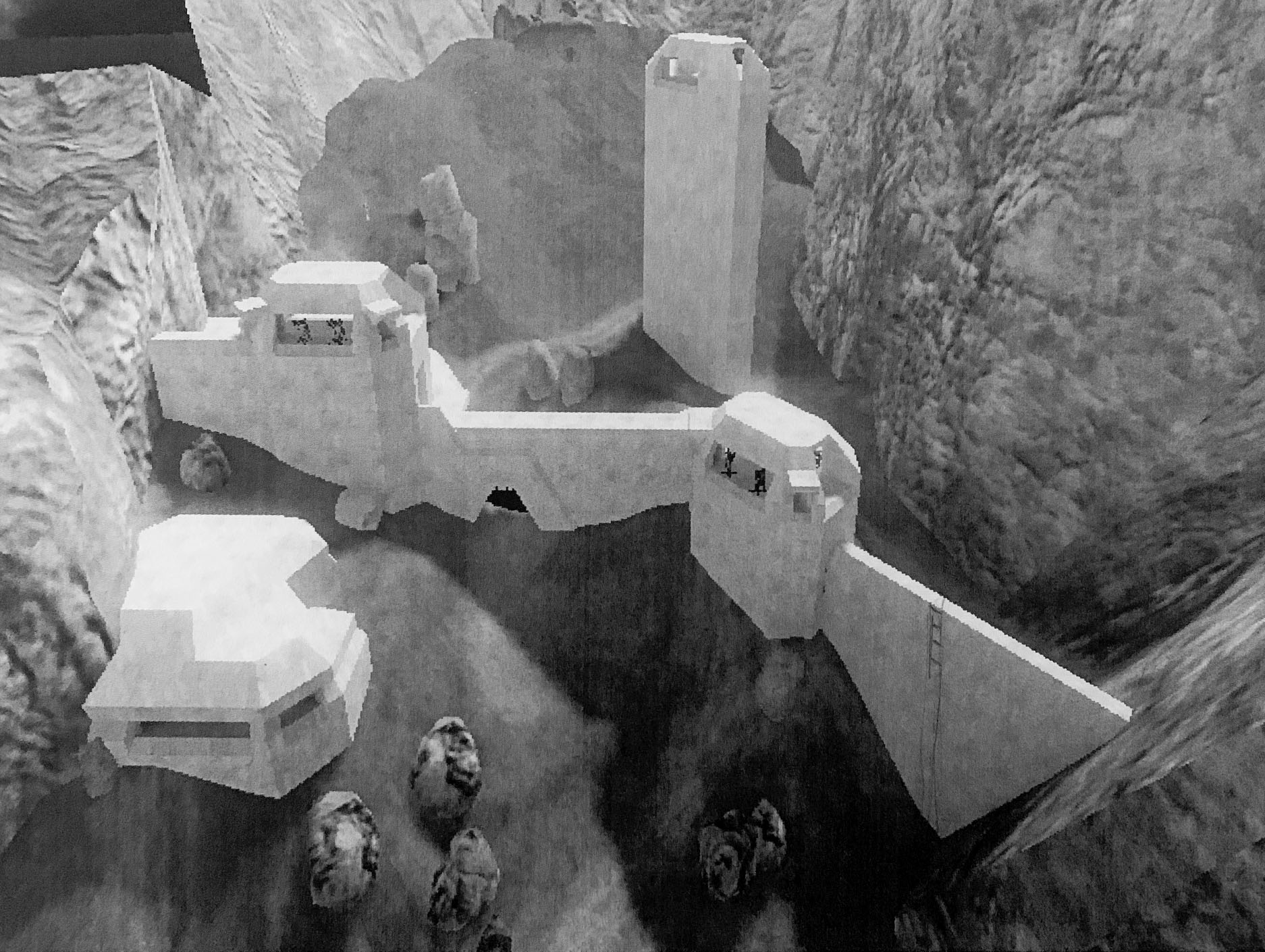
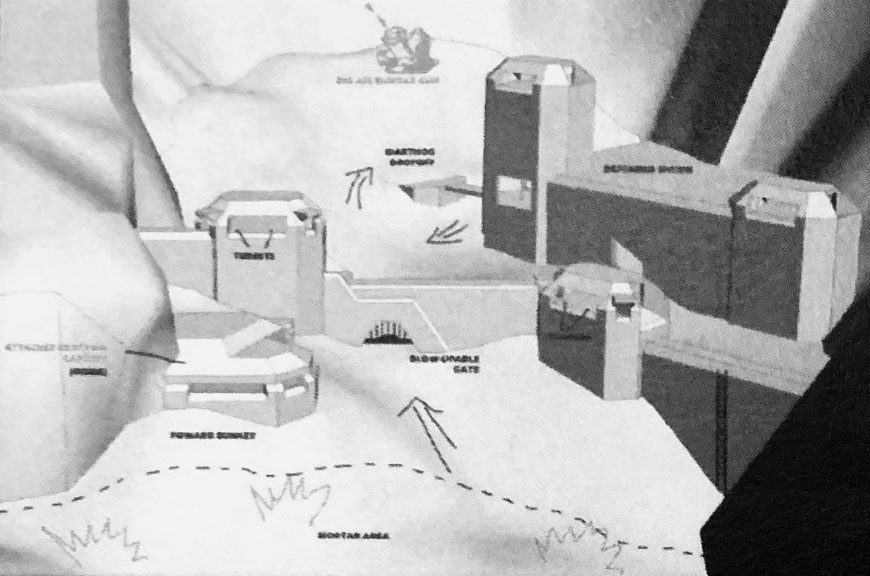
Cotton: High Ground started as one of those vignettes we did—could we build a wall that one team had to take from another team? The other mechanic that I remember speccing out, that we didn't end up using, was the idea that there were defenses, like mortar shells you could fire from behind the wall.
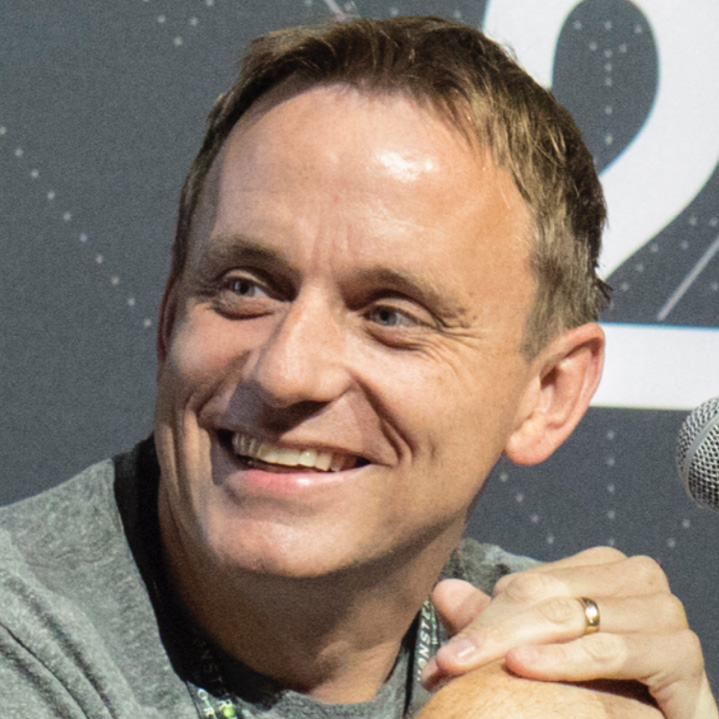
Carney: We had AI gunners!
Cotton: We did end up with a gun [turret] in the front, in like, the worst position for a gunner to be. (laughs)
The biggest gaming news, reviews and hardware deals
Keep up to date with the most important stories and the best deals, as picked by the PC Gamer team.
There was even, I believe I even called it a big-ass mortar gun, or something, in the back. [In my drawings] there are little graphics of explosions happening along the hillside leading to the wall. There was something about D-Day, storming the beach at Normandy, that I wanted to capture in the sense of getting up to this wall.
We didn't end up using the mortars. But for the attacking force I remember talking a lot about the equipment they could use to breach the wall. One was the jump pad, and we intentionally put it in a spot where somebody could grab it and get to a place that made a lot of sense to stealthily jump up to the sniper tower. The height of the sniper tower had to be such that you could make that jump using the jump pad.
Cotton shared the initial design document for High Ground, which captures most of what ended up being in the final map. It begins: "A staged assault. The great wall at VOI is nearly impregnable with one heavily fortified underground passageway through and only one scalable other way over the wall. The wall is ancient but has been retrofitted with modern bunkers and gun placements. Its purpose: an artillery compound and last line of defense from the Covenant."
The design doc includes a few interesting distinctions from the final map, like the gate being "destroyed" rather than opened, and only one alternate entrance, instead of the eventual two. Cotton originally planned for it to fit a Warthog rather than a Ghost. It also describes the "heavy artillery gun at the top of the hill that mortars the hillside below the wall during the assault," which you can see on the final map, but sadly just as a non-functional decorative object.
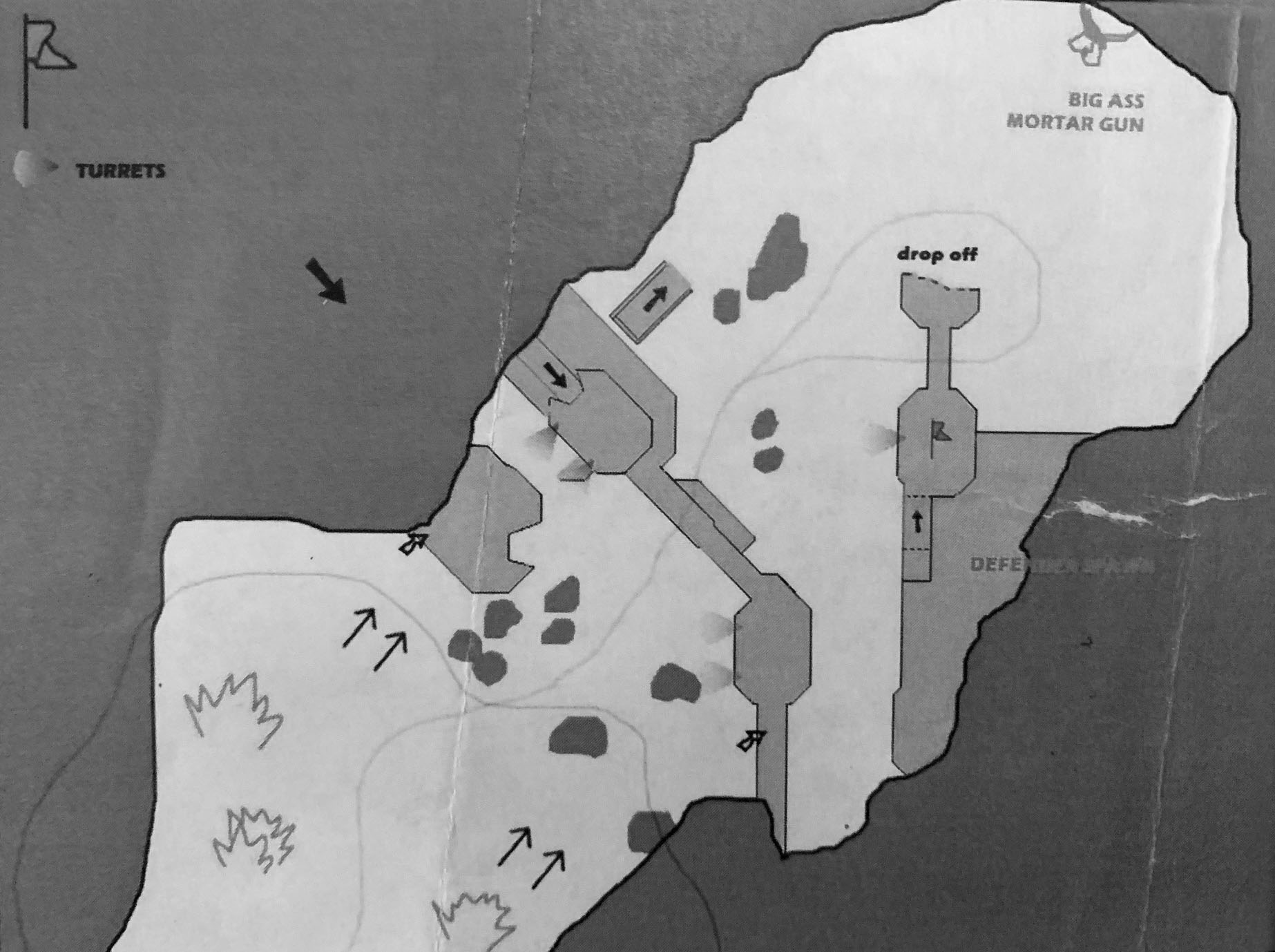
Carney: Equipment was a system that we were developing early on, and it was a way for you to mix up an encounter. You're getting chased by a group of folks but then you throw that bubble shield down and now there's temporary cover. If you think about that classic 30 seconds of Halo fun, it was another element to add to that sandbox. I think as map designers we spent a lot of time coming up with good locations for potential objects...

Cotton: Didn't the bubble shield just roll down the hill [early in development], Carney?
Carney: Initially it would go rolling down the hill. (Laughs.)
Cotton: You'd deploy it and there it would go. (Laughs.) There was a lot of thought to the equipment usage in that map. It had more of a story than most of the maps, in terms of how we wanted the encounter to play out. It was very attack/defend. There's a hole in the wall here, a tunnel you can crawl through here, a gate you can open...
There was something about both teams being outside on both sides of the wall. This could've easily just been a base, the whole thing could've been an interior. But in the early drawing, it was like, here's a giant wall for no reason, and there's a base behind it. And that stuck.
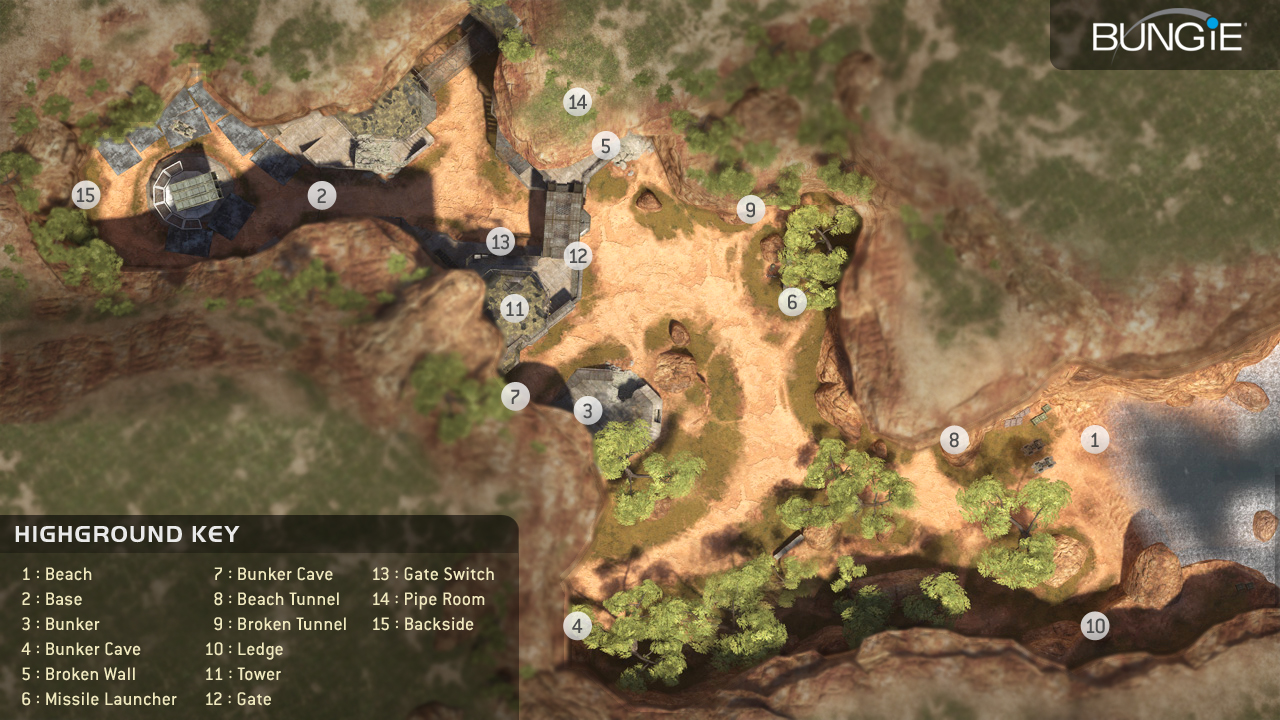
Carney: It's beautiful.
Cotton: [The partially destroyed aesthetic] allowed for the right amount of pathing and choice for players to get around the base. The wrecked bunker in the front didn't start that way. It actually started as a bunker with a giant door for no reason. It was like, 'this big opening doesn't make sense for a bunker. What could've happened to create the opening?'
Carney: I think this is a map that had such a strong initial design, as Steve worked on it it just got better and better. It didn't deviate much from that initial idea.
Cotton: It's a lot like Zanzibar in that way. It was strong from the beginning, and it was just about finishing it. I did end up iterating on the area in the back. I believe the flag was initially back inside that structure, and it made more sense to put the flag out in the middle of that courtyard.
I think the tube was an add later, as we realized we wanted more routes into the base. It's a very asymmetrical map, right? It's clearly trying to give one team the role of being defenders. But at the same time, you can play it Slayer. I still think it's pretty balanced, too.
We'll have more stories from Carney and Cotton on the making of Guardian, The Pit, Valhalla, and some maps that never made it into the shipping version of Halo 3, in the coming weeks.

Wes has been covering games and hardware for more than 10 years, first at tech sites like The Wirecutter and Tested before joining the PC Gamer team in 2014. Wes plays a little bit of everything, but he'll always jump at the chance to cover emulation and Japanese games.
When he's not obsessively optimizing and re-optimizing a tangle of conveyor belts in Satisfactory (it's really becoming a problem), he's probably playing a 20-year-old Final Fantasy or some opaque ASCII roguelike. With a focus on writing and editing features, he seeks out personal stories and in-depth histories from the corners of PC gaming and its niche communities. 50% pizza by volume (deep dish, to be specific).

